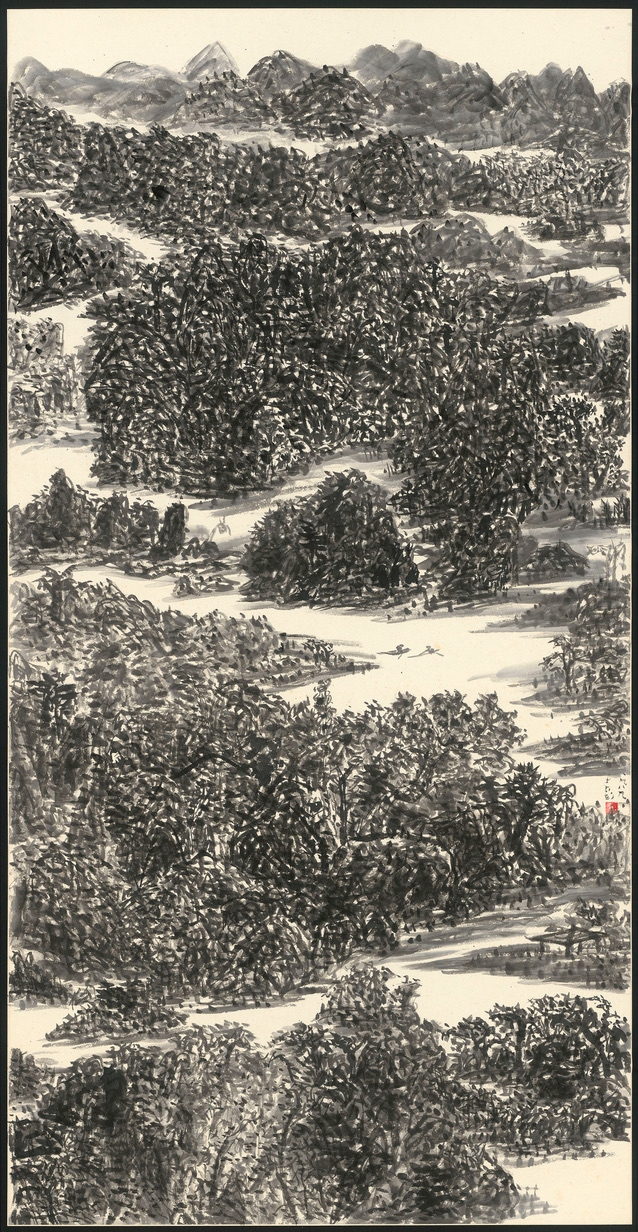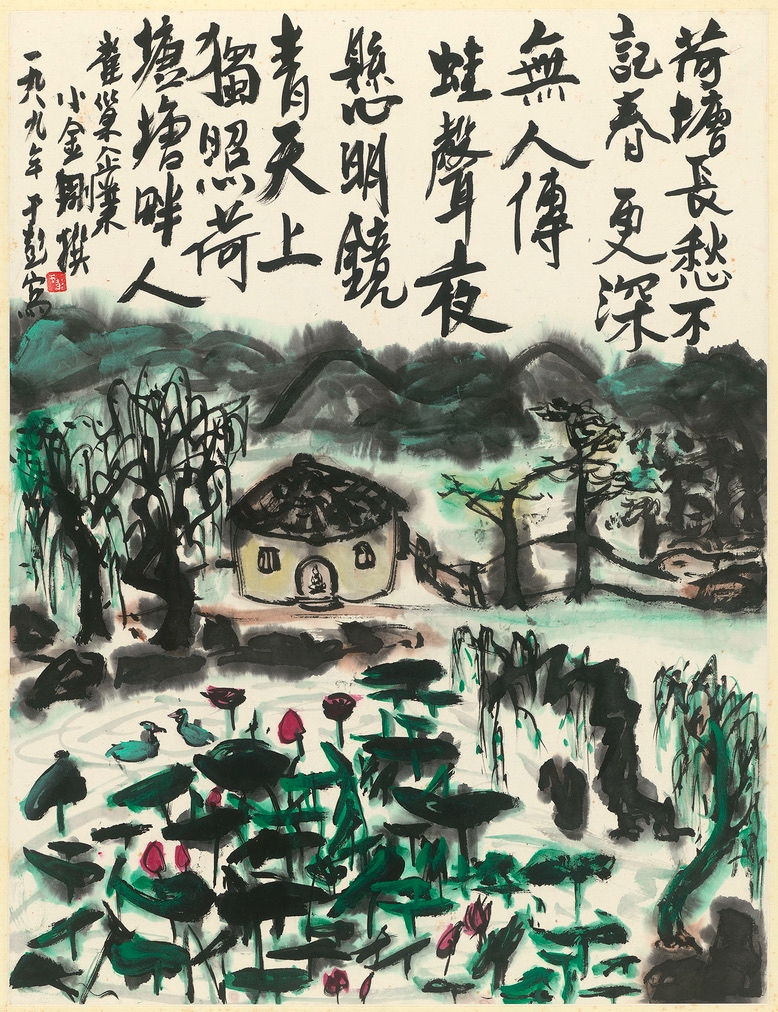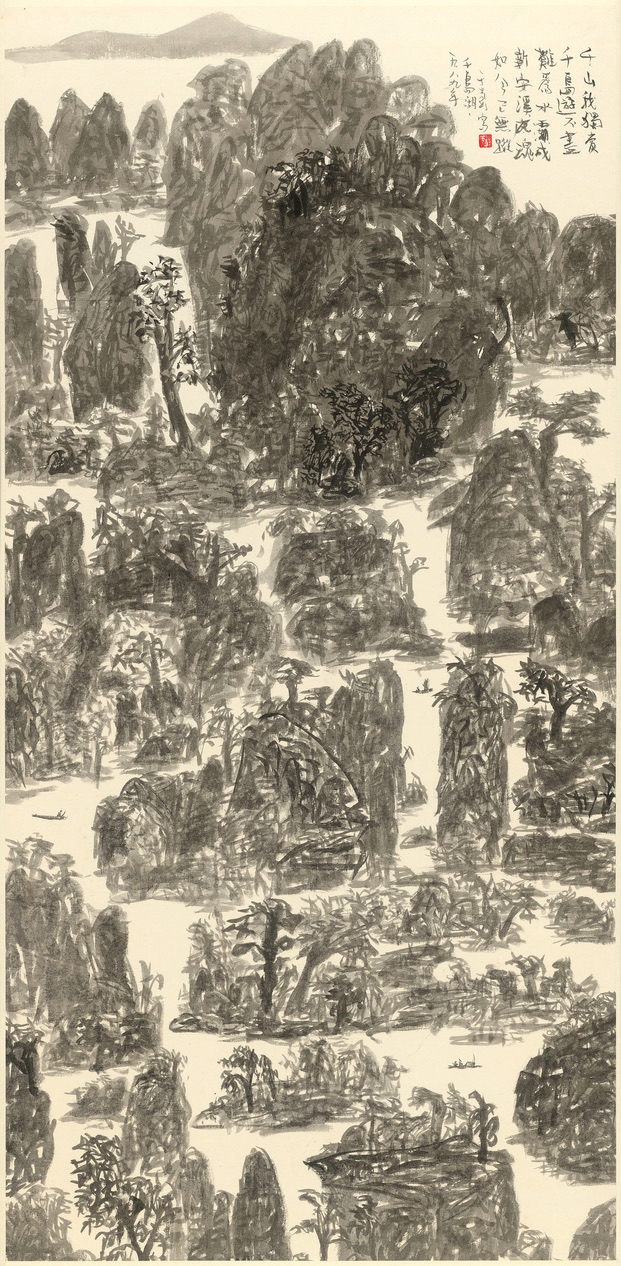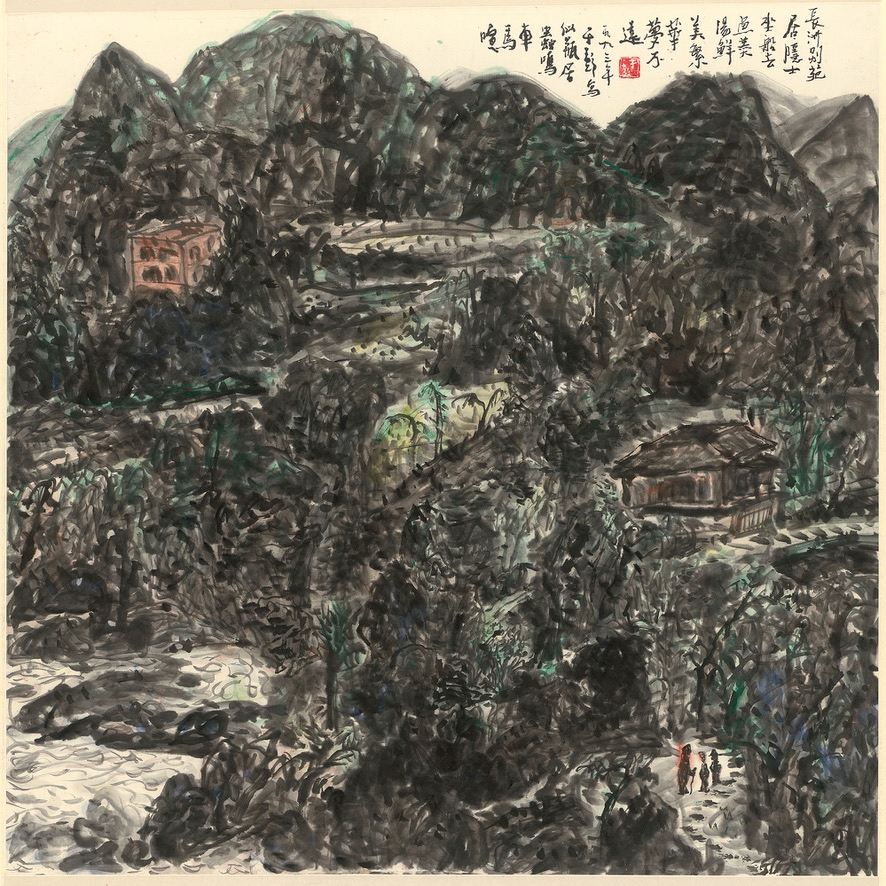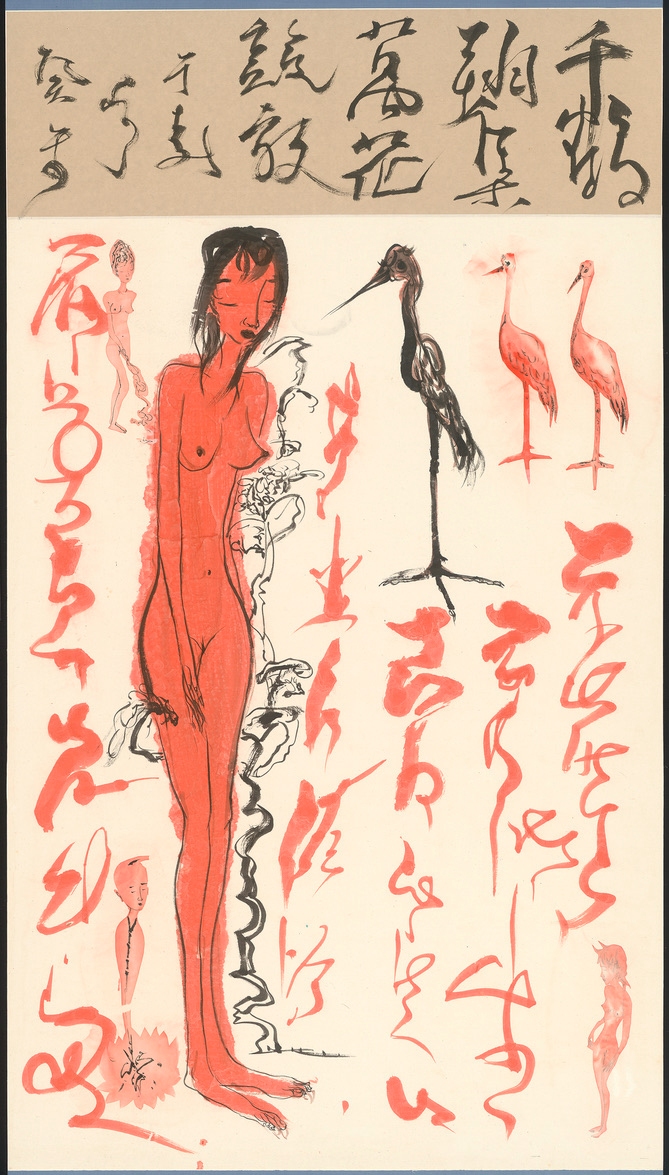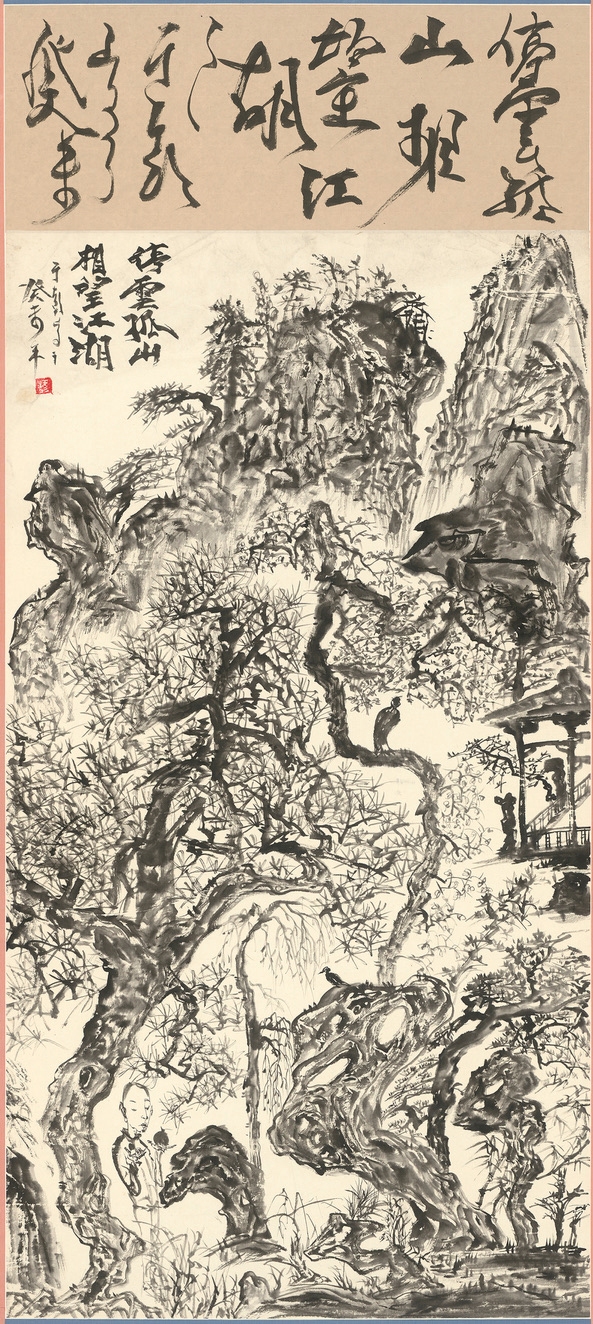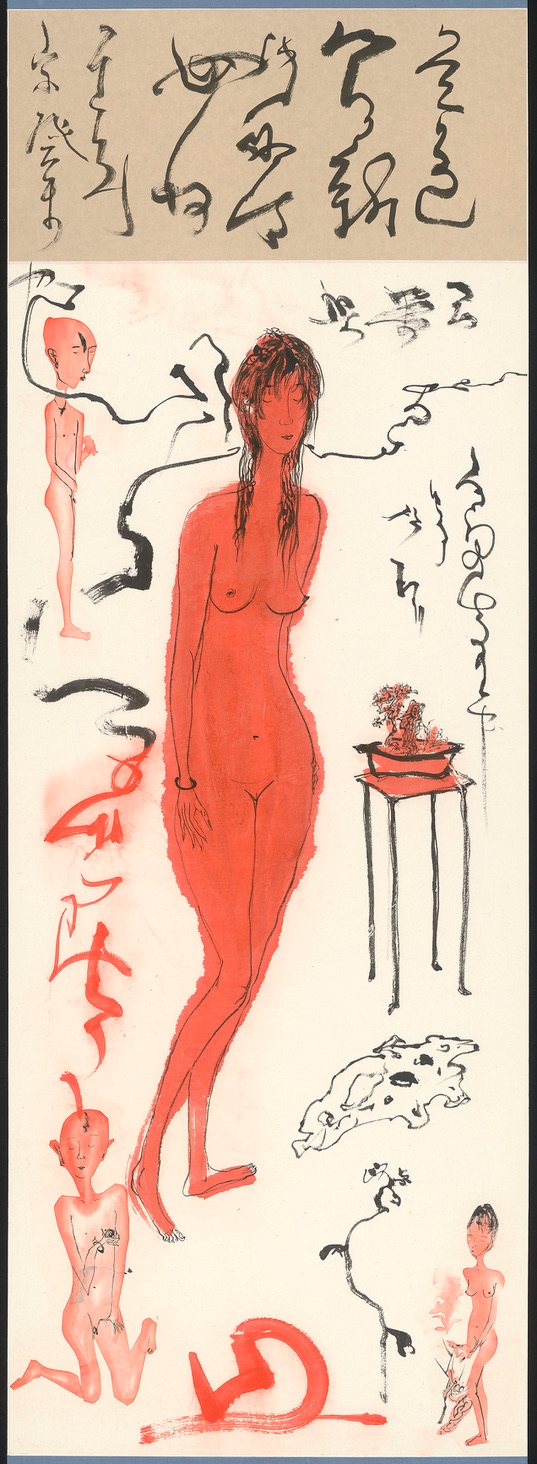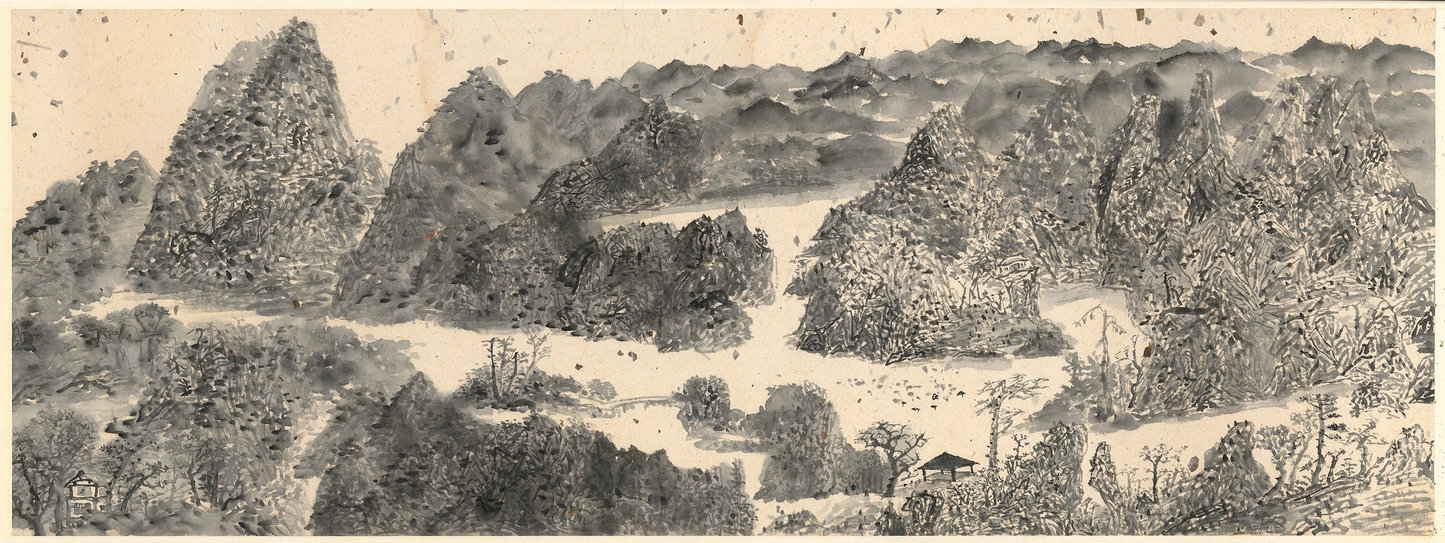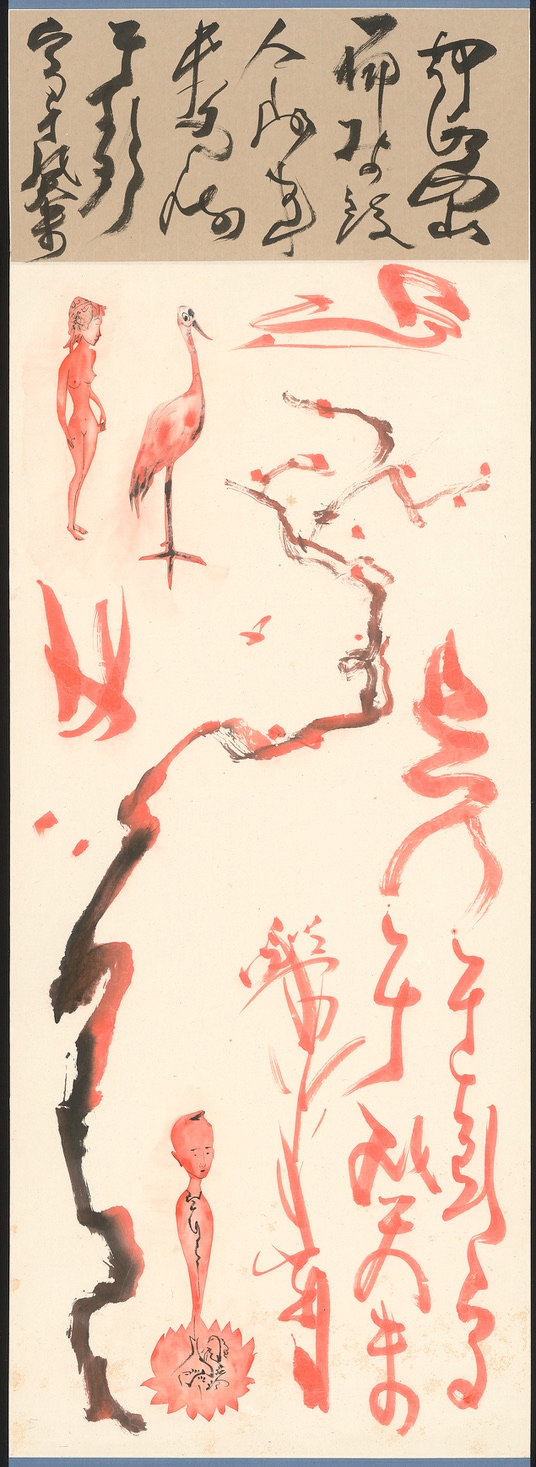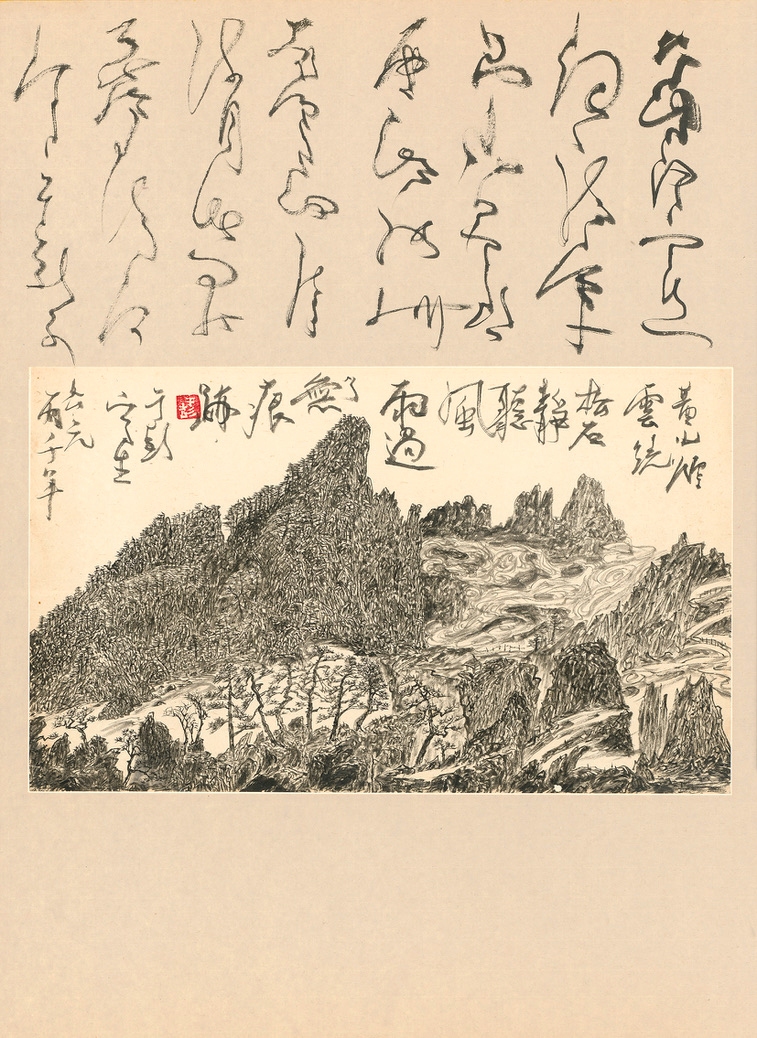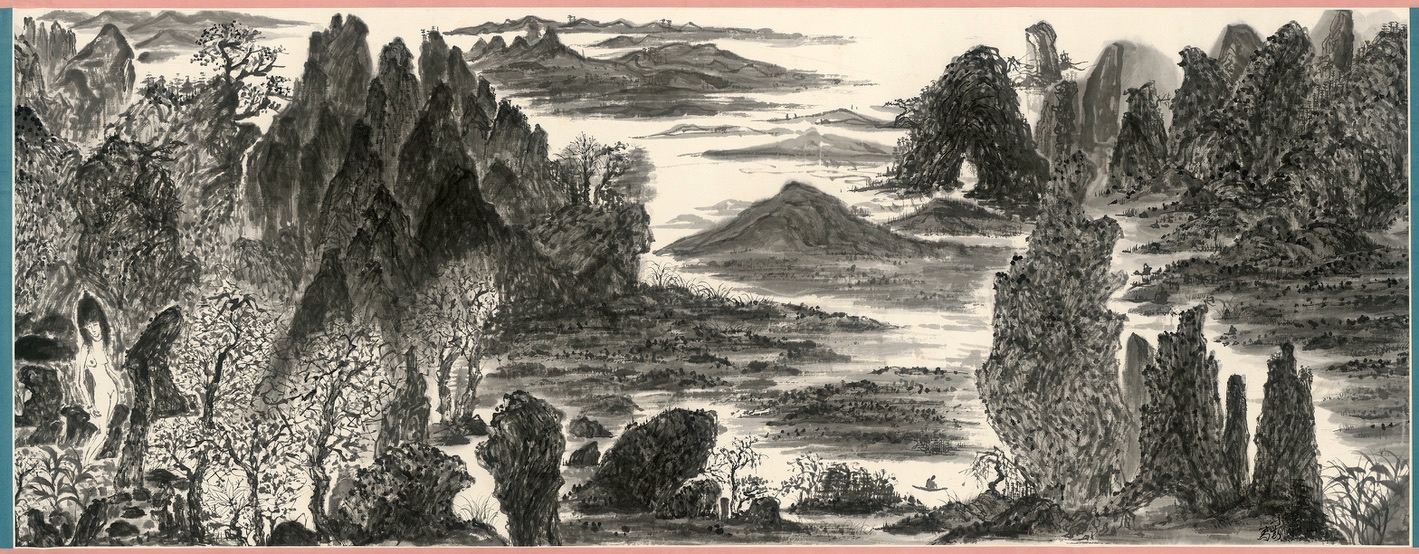Peng Yu
Taiwan
Yu Peng, was a Pingyangtang Hakka born in 1955 in Waishuangxi, Taipei. Since childhood, he loved clay sculpture and painting, and, at the age of 17, was determined to become an artist, setting up a stall in the Taihoku New Park to draw portraits for tourists. At the age of 22, he was able to make a living selling watercolors, sketches, ink paintings and portraits. During his career as a street painter, he developed his keen quick sense of observation. His style of character art was already both mature and sophisticated.
Yu Peng's creative work came at a time when Taiwanese literature was just emerging in the Chinese-speaking world, and there were frequent exchanges between painters and literati. Thus it is that literary thinking is interwoven within the very narrative fabric of Yu Peng’s paintings. From his paintings, we can experience the idealized fairy world from Tao Yuanming’s Peach Blossom Spring fable. Yu Peng’s down-to-earth characters, contrasting with his slender, endless ink lines, are key hallmarks of his millennial Landscape of Lust and Characters series, and herald an important and representative period for the artist. Yu Peng once described himself as an ancient man from the mountains and forests who lived in the city. He used paper for the sky and the earth, continuously painting far-reaching and lingering landscape masterpieces, portraits of fairies and phantoms of ladies. Yu Peng is most renowned as an ink painter. However, it is clear from the many sketches of his youth that his lifelong achievements in ink art originate in his innovative thinking and innate talent.
Yu Peng passed away in Taipei in 2014. The 2011 exhibition Loyalist ‧ Migrant ‧Hermit at Xinyi Eslite in Taipei was his largest exhibition in Taiwan during his lifetime, with a total of 100 oil paintings and ink works. Yu Peng's lifelong artistic achievements have spread far and wide internationally, and he has been invited to participate in important exhibitions such as the Shanghai Biennale, Shenzhen Ink Biennale, Chengdu Biennale, and the Metropolitan Museum of Art in New York. His works have been collected by the Hong Kong Museum of Art, the British Museum, the Taipei Fine Arts Museum, the Asian Art Museum of San Francisco, the National Taiwan Museum of Fine Arts, the Metropolitan Museum of Art in New York, the National Gallery in Berlin, the Harvard University Art Museum, the Museum of Modern Art in Chengdu, the Swiss Oregon Art Foundation, the Shanghai Zhangjiang Museum of Contemporary Art, and the Hong Kong M+ Museum.

